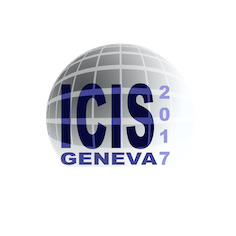Speaker
Description
We report on the characteristics of the beam-generated plasma in the multibeamlet case of a large hydrogen negative ion (H$^-$) beam at NIFS. The plasma potential, and the energy of secondary particles in the drift region of an ion beam, offer an insight into the mechanisms that allow beam transport in low pressure gasses.
The first measurements reported here were made by means of a four-gridded retarding field energy analyzer, combined with the measurement of the drain current at the beam dump, and with infrared beamlet monitoring technique. The retarding field analyzer measures the energy distributions of particles emitted radially from the beam-generated plasma [1]. The beam is dumped onto a graphite calorimeter, which is electrically insulated, so that it can be electrically biased and the collected current can be measured. The thermal image of the calorimeter is acquired during the beam pulse, thus offering a quantitative estimation of the single beamlet optics and multibeamlet focusing [2].
The influence of the neutral gas density is studied by puffing hydrogen gas in this drift region. Neither the ion nor electron saturation current are stable in low pressure regime, while above 10 mPa the characteristics can be obtained for a ~50 keV, 300 mA beam. The measured ion and electron energy distribution functions are strongly affected by the electric bias of the calorimeter, giving indications on the plasma potential profile in the diffusion region. In the compensation region, the beam potential is set by the calorimeter potential. The measured ion distribution functions suggest the possible presence of two populations with different temperatures. The collected data will be used to improve and validate numerical models of beam-plasma formation [3].
References
[1] E. Sartori, G. Carozzi, P. Veltri, M.Spolaore, R. Cavazzana, et. al., Development of an Energy Analyzer as Diagnostic of Beam-Generated Plasma in Negative Ion Beam Systems, presented at the 5th International Symposium on Negative Ion Beams and Sources, Oxford, 2016.
[2] K. Tsumori, M. Osakabe, Y. Takeiri, O. Kaneko, K. Nagaoka, et. al., Beamlet characteristics in the accelerator with multislot grounded grid, Rev. Sci. Instrum. 81, 02B117 (2010).
[3] E. Sartori, TJ Maceina, P Veltri, M Cavenago, G Serianni, Simulation of space charge compensation in a multibeamlet negative ion beam, Rev. Sci. Instrum. 87 (2), 02B917 (2016).




